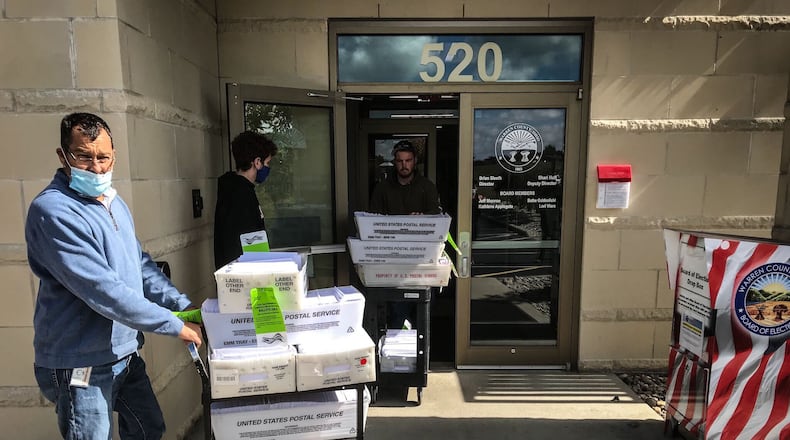“Of the different options that present themselves for conducting a primary election this year, holding two separate primaries is the worst one available to the legislature,” the letter says.
John Fortney, communications director for the Senate Majority Caucus, said Friday that Huffman’s office had received the OAEO letter but had no further response.
Brian Sleeth, Warren County Board of Elections director and president of the Ohio Association of Election Officials, said Friday that the letter appears to be having an effect.
“I heard that the letter is generating some positive talk,” he said. “I have not heard personally yet. I did hear it was doing what it was intended to.”
An election will be held May 3 for statewide offices, local races and a U.S. Senate seat, Huffman said Wednesday. The question is how to hold elections for Ohio House and Senate, and U.S. House seats because district maps for those offices haven’t been settled.
“I am increasingly skeptical that we can have a General Assembly and a congressional map on May 3, which means that election would have to be some time after that,” Huffman said. “We would simply create a second primary date after May 3. It would probably have to be substantially after May 3, because the election doesn’t really stop on May 3.”
It takes about 30 days to wrap up everything after an election, at which point officials could start preparing for another round of voting, he said.
Huffman said Secretary of State Frank LaRose’s office passed on information from local boards of elections, saying they don’t think they can manage General Assembly elections by May 3 due to the short timeline. Many steps are involved in the run-up to an election, and with district maps expected to change again, allowances must be made for declared candidates who may no longer live in the same district, Huffman said.
The Ohio Supreme Court has twice struck down new maps of state House and Senate districts, most recently on Feb. 7; and on Jan. 14 also threw out the new map of Ohio’s 15 U.S. House districts. All those maps had passed with only Republican support, and the court ruled they unfairly favored Republicans.
Justices gave legislators until Feb. 17 to approve a third version of state House and Senate maps. Legislators are tossing the job of drawing a new U.S. House map back to the Ohio Redistricting Commission, giving that body until March 15.
But the filing deadline for candidates for state House and Senate seats was Feb. 2, and the deadline for U.S. House seats is March 4.
The Ohio Supreme Court has noted that the General Assembly can move primary dates if necessary.
It’s up to legislators to figure out what to do, Sleeth said, but election administrators can tell them holding two primaries is “not the answer.”
Hard as it might be to hold primaries on a shortened timeline, holding two elections back-to-back would be even tougher, he said. The letter cites recruiting poll workers, securing polling locations, testing and preparing voting machines, and obtaining ballots in the midst of supply chain issues for paper and toner.
“Finding poll workers is going to be extremely hard,” Sleeth said.
Two primaries would confuse voters in an election already expected to have low participation, the letter says: even-year primaries and special congressional elections often draw fewer than 10% of registered voters.
“We would encourage the redistricting commission to act quickly to put maps in place, and press forward with a single primary on May 3,” the letter says. “Absent that, the legislature should consider moving all contests to a later primary date.”
State legislators would have to pass a bill splitting the primary, Huffman said. No one he has talked to wants to move the election date for statewide and local races, which are unaffected by legislative map changes, he said.
Ohio has held two primaries before, Huffman said. A split primary was contemplated in 2011 — with dates established in March and June — but a legislative deal forestalled it, he said.
The letter says when legislators considered holding two primaries in 2011, the cost was estimated at $15 million.
“Given the complexities of elections in 2022, this number is certainly higher,” it says.
About the Author

